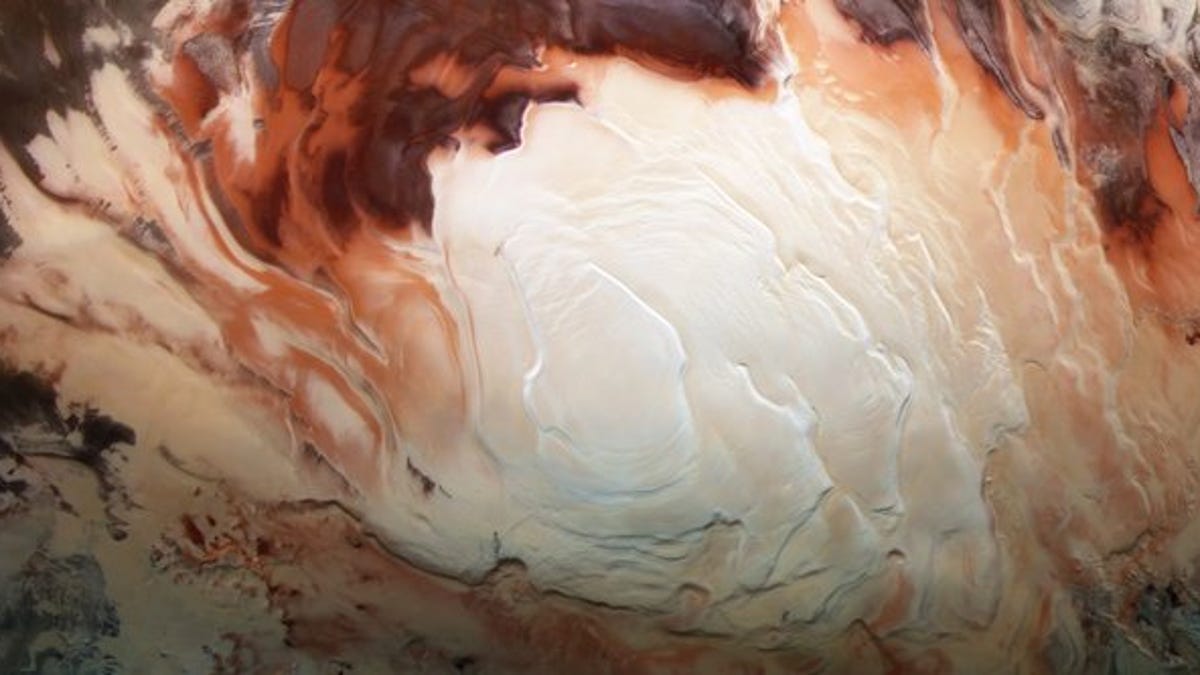NASA investigates perplexing mystery of lakes under Mars surface
A new study finds the possible lakes are more widespread than thought. But are they really liquid water?

The ESA calls this beautiful image of the Martian surface "Cappuccino swirls at Mars' south pole."
Hidden lakes under the southern ice cap of Mars sound downright mystical. A new NASA study takes a fresh look at data that hints at hidden pools of liquid under the surface, and we now have even more questions than we did before.
Two researchers with NASA's Jet Propulsion Lab investigated radar data from the European Space Agency's Mars Express spacecraft and found dozens of spots around the Martian south pole that could indicate hidden ponds. This builds on a 2018 study that found a hidden lake and a 2019 paper describing several more possible ponds.
"We're not certain whether these signals are liquid water or not, but they appear to be much more widespread than what the original paper found," said JPL's Jeffrey Plaut, co-author of a paper published in the journal Geophysical Research Letters this month. "Either liquid water is common beneath Mars' south pole or these signals are indicative of something else."
The possible lakes show up as bright radar reflections in an area called the South Polar Layered Deposits. It's a lasagna-like region with layers of water ice, dry ice and dust.
The colorful dots indicate bright radar reflections. A new study questions if they indicate subsurface liquid water, or if perhaps something else is going on.
What's unusual about the new findings is that some of the identified spots are less than a mile from the surface and estimated to be minus 81 degrees Fahrenheit (minus 63 degrees Celsius). That's so frigid even extremely salty water would freeze. The previous studies had suggested a high salt content could explain why the water remained liquid despite the cold polar temperatures.
Another idea is that recent volcanic activity deep below the surface could be keeping water warm enough to stay liquid. Lead author Aditya Khuller, a formerJPL intern, addressed this concept: "However, we haven't really seen any strong evidence for recent volcanism at the south pole, so it seems unlikely that volcanic activity would allow subsurface liquid water to be present throughout this region."
The researchers created a map showing the possible subsurface lake locations based on the bright radar reflections. They aren't ready to declare what's causing the signals, which leaves us with an ongoing mystery: Are there subsurface lakes on Mars' south pole, or is something else happening there?
Said Plaut, "Our mapping gets us a few steps closer to understanding both the extent and the cause of these puzzling radar reflections."
Follow CNET's 2021 Space Calendar to stay up to date with all the latest space news this year. You can even add it to your own Google Calendar.

